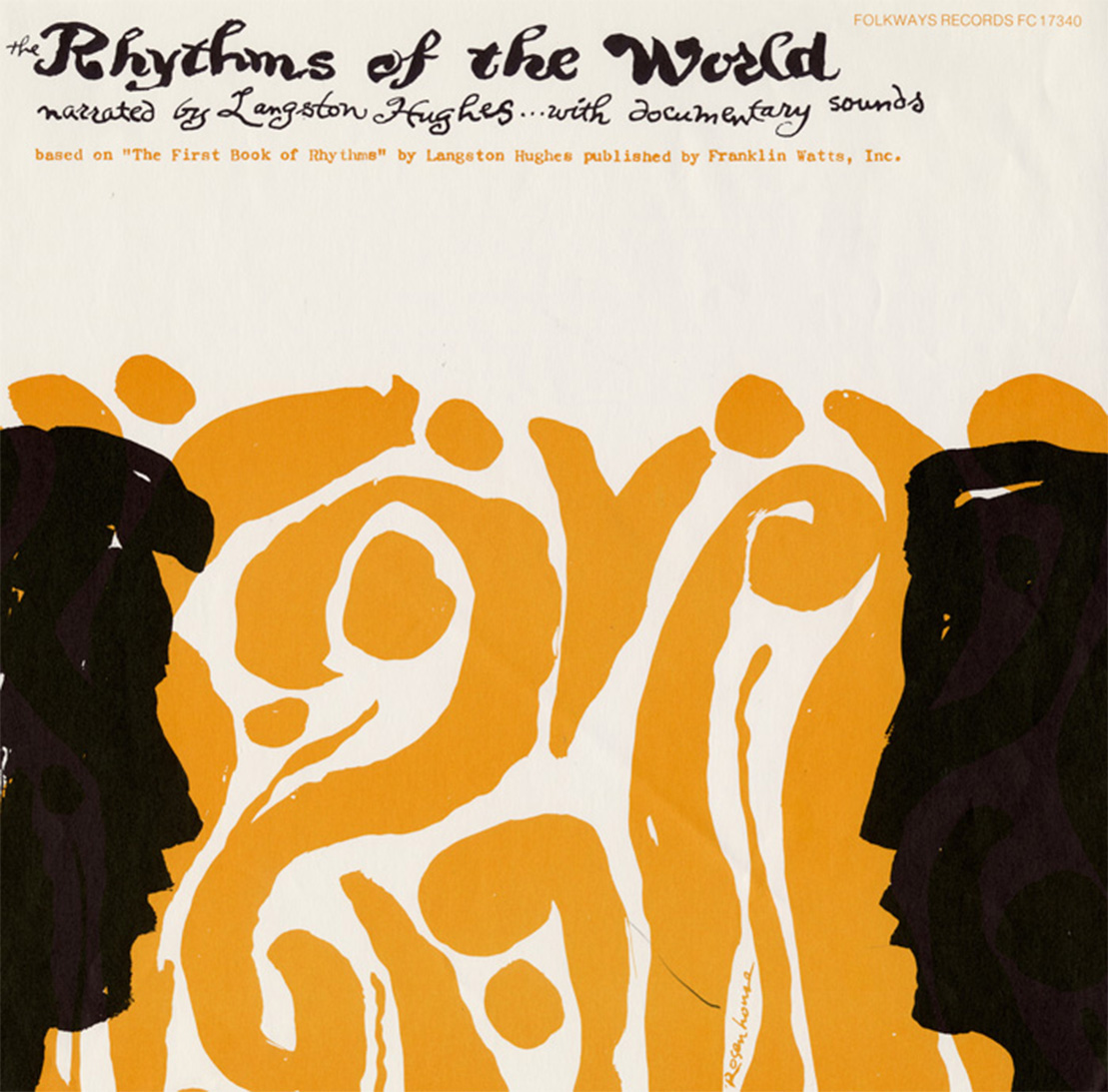-

Langston Hughes’
Rhythms of the WorldKnown mostly as a brilliant and prolific poet of urban Black life, Langston Hughes (born February 1, 1901) was a vocational polymath with a particular ear, and pen, for sound. Hughes wrote poems whose cadence, setting, and syntax were rooted in jazz and blues, collected and anthologized Black music, wrote Black music history books, penned songs, and realized musicals for on- and off-Broadway. He also recorded, produced, and participated in a number of albums with Folkways Records.
Amongst his own albums, which run the gamut from poetry to Black history and gospel music, one stands out: Rhythms of the World, a panoply of ethnographic sound recordings strung whimsically together by Hughes’ own narration. The subject is how rhythms throughout the world are connected, from the human heartbeat to the waves of the ocean. “All rhythms of life are in some ways related,” Hughes says. “Listen! Let me tell you how….Remember!”
A deeply sonic project, Rhythms of the World originated as a children’s book. Published by children’s and young adults’ imprint Franklin Watts throughout the 1950s, “The First Books” series was created to introduce various topics to children. Hughes drafted nine and published five of these books. Released in 1954, The First Book of Rhythms was his second.
Rhythms of the World was released just one year later, in 1955. While it similarly shows Hughes’ interest in writing for children—an interest that was also shared by Folkways Records—the album is quite different than the book. Where The First Book of Rhythms moves eccentrically through visual, spatial, physical, energetic, and feelingful rhythms—always with an ear to the audible realm—Rhythms of the World overflows with sound. It samples early Folkways Records albums like Sounds of the Sea, Vol. 1: Underwater Sounds of Biological Origin, Ring Games: Line Games and Play Party Songs of Alabama, Baby Dodds Talking and Drum Solos (from the Footnotes to Jazz series), and Sound Patterns. It even boasts a handful of field recordings, including one of Hughes himself taking a walk.
Hughes used ethnographic materials to experiment with different types of musical performance across his work: in plays, songwriting, poetry, history, and fiction. Rhythms of the World is a creative and unique formation of this project. In it, he exercises a loose freedom of association, weaving the world together with sound.
Listen to the Folkways recordings that Langston Hughes samples in Rhythms of the World:
YouTubeExplore Langston Hughes’ albums on Folkways Records:
Written & Narrated by Langston Hughes:
The Story of Jazz (1954)
Rhythms of the World (1955)
The Dream Keeper & Other Poems of Langston Hughes (1955)
The Glory of Negro History (1966)
Sterling Brown and Langston Hughes, Sterling Brown and Langston Hughes (1967)
The Voice of Langston Hughes (1995)
Written by Langston Hughes:
Second Canaan Baptist Church Porter Singers, Tambourines to Glory: Gospel Songs by Langston Hughes and Jobe Huntley (1958)
Melvin Stewart, Langston Hughes’ The Best of Simple (1961)
Hugh Porter, Langston Hughes’ Jerico-Jim Crow (1964)
Margaret Walker, Margaret Walker Reads Margaret Walker and Langston Hughes (1975)
Margaret Walker Alexander, Margaret Walker Alexander Reads Poems of Paul Lawrence Dunbar and James Weldon Johnson and Langston Hughes (1975)
Nap Turner, Hughes Views of the Blues (1975)
Langston Hughes’ Rhythms of the World | Smithsonian Folkways Recordings

